Forts in Portland, Maine, showcase a rich history of military fortifications that have played vital roles in securing the region. Nestled within beautiful landscapes like Casco Bay and Portland Harbor, these historical sites allow visitors to explore a broad spectrum of North America’s past, from the colonial days to World War I and II.
Sites such as Fort Preble, Fort Scammel, and Fort McKinley are not only essential to understanding the city of Portland and the state of Maine’s military history.
Still, they are also valuable landmarks near popular attractions such as Portland Head Light, House Island, and Great Diamond Island. Visiting these forts uncovers stories of submarine mines, granite forts, and unique defenses like Hog Island Ledge that protected the Maine coast from potential invaders.
The blend of natural beauty and historic significance make forts in Portland an increasingly popular destination for locals and tourists alike. They provide an engaging educational experience and a testament to the evolution of military fortifications along the picturesque Maine coast.
Historic Forts in Portland Maine
Fort Gorges

Fort Gorges is a fascinating piece of American history that was essential in protecting Portland Harbor during a great conflict in the United States. The fort was constructed in the mid-19th century during heightened tension and uncertainty in the country. It was named after Sir Ferdinando Gorges, a colonial proprietor of Maine who played a significant role in the state’s early history.
The fort was built primarily out of granite quarried from nearby islands and transported to the site by boat. It was designed to be a formidable defensive structure, with thick walls and strategically placed gun emplacements that could be used to repel enemy ships that might attempt to enter Portland Harbor.
During the Civil War, Fort Gorges played a critical role in protecting Portland Harbor from possible attacks by Confederate ships. It was staffed by a garrison of soldiers responsible for maintaining the fort and keeping watch for any signs of enemy activity.
Today, Fort Gorges is managed by the nonprofit Friends of Fort Gorges, which works to preserve the fort and promote its use as a public park. Visitors can explore the fort’s many tunnels and chambers, climb to the top of its walls to take in stunning views of Casco Bay and learn more about the history of this important site.
Fort Popham
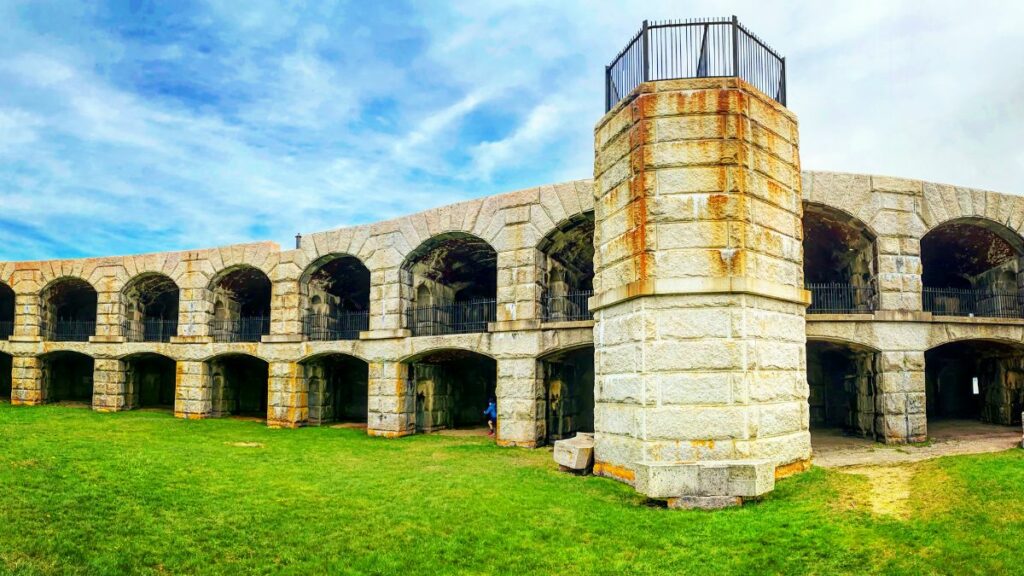
Fort Popham was constructed in the mid-19th century as part of a system of coastal defenses designed to protect Maine’s strategic ports and harbors during the Civil War. It was later reinforced during World War I when the threat of enemy naval attacks on the East Coast of the United States became a major concern.
Despite its impressive design and construction, Fort Popham was ultimately abandoned due to advancements in military technology. As airplanes and submarines became more prevalent, traditional coastal defenses like Fort Popham became less effective, and the fort was decommissioned in the early 20th century.
Fort Knox

Fort Knox is a stunning granite fortification situated in Prospect, Maine, along the banks of the Penobscot River. The fort was constructed in the 1860s as part of a system of coastal defenses designed to protect the United States from potential foreign invasion. It was built using the finest granite blocks, quarried from nearby Mount Waldo, and transported to the site by boat.
Fort Knox is positioned near Fort Sumter, another important military fort that played a critical role in the American Civil War. Fort Sumter is located in Charleston Harbor, South Carolina, and is famous for being the site of the first shots of the Civil War.
Today, Fort Knox is a state park and a National Historic Landmark, open to the public for visits and educational programs.
Fort Preble
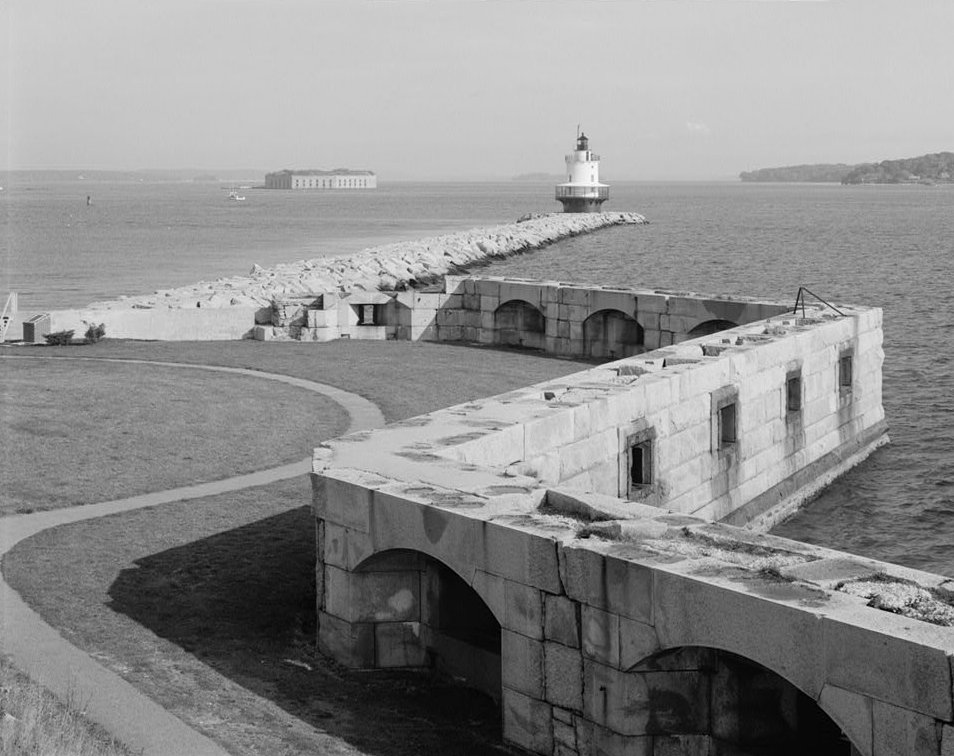
Fort Preble is located in South Portland, Maine, near Portland Harbor. The fort was an active military installation from the early 19th century until World War II, and played a critical role in protecting the harbor from potential threats during this time.
During World War I, Fort Preble was fitted with submarine mines installed on the ocean floor to protect the harbor from enemy ships and submarines. The mines were designed to detonate on contact with a vessel, creating a powerful explosion that would disable or sink the ship.
Fort Preble is part of Southern Maine Community College’s campus, and many of its buildings and structures have been repurposed for educational and administrative purposes.
Fort Scammell
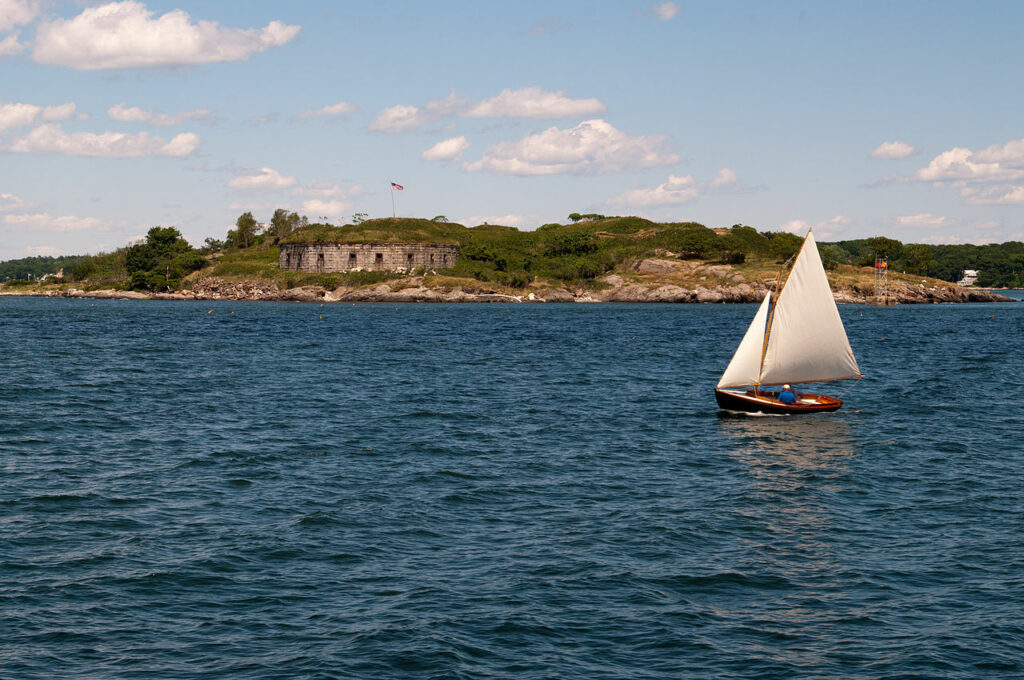
Fort Scammell is located on House Island, a private island in Casco Bay, Maine. The fort protected Portland Harbor during the 19th and 20th centuries, serving as a coastal defense against potential foreign invasion.
Originally constructed using wooden structures, Fort Scammell was later upgraded with granite walls, which made it a more formidable defensive structure. The fort’s thick walls and strategically placed gun emplacements were designed to repel enemy ships that might attempt to enter Portland Harbor.
Fort Scammell is now privately owned and accessible by private boat tours.
Fort William Henry
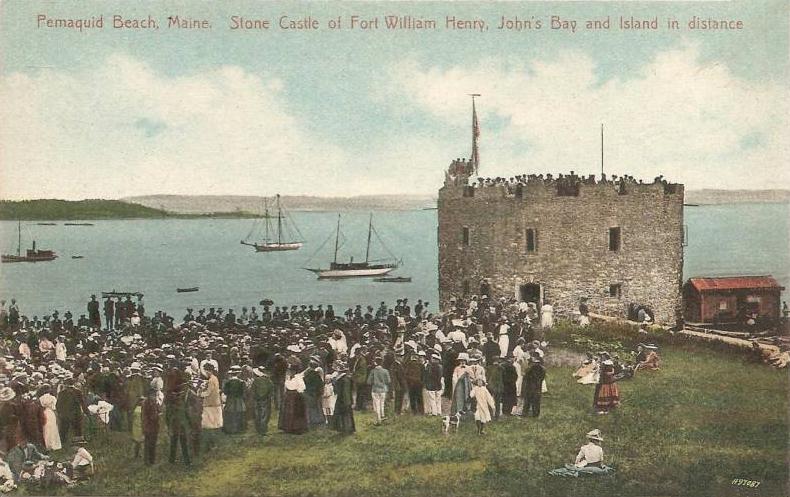
Fort William Henry, situated in Pemaquid, Maine, is a captivating historic site that offers a glimpse into the nation’s early colonial past. Constructed by English settlers in the late 17th century, this fort is a testament to the area’s rich history and its strategic importance during the formative years of America’s settlement.
This fort was a significant player in the tapestry of colonial history, standing as a symbol of English presence in a then-new world. It embodied the struggle for territorial control and security against various threats during that era. Fort William Henry was at the heart of many important historical events, and walking its grounds offers a palpable sense of history that’s hard to match.
Currently managed by the Friends of Fort Edgecomb, the stewardship has ensured the fort’s longevity, preserving its historical integrity while making it accessible for the public to explore and learn from. They are dedicated to preserving, interpreting, and enhancing this unique fort, offering an experience that seamlessly blends history with a breathtaking natural setting.
Open for public visitation; the fort offers a unique opportunity to step back in time. Visitors can walk the same grounds the settlers once trod, see the structures they built, and soak in the breathtaking views of the surrounding area they once surveyed. Every brick and beam in Fort William Henry tells a story of the past – a narrative of courage, resilience, and historical change.
Fort Halifax
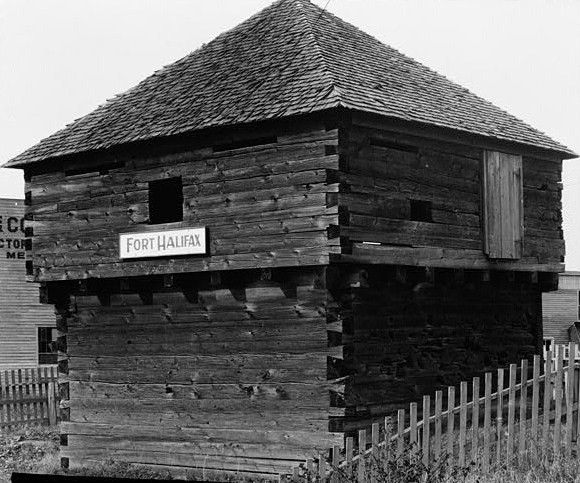
Nestled in the charming town of Winslow, Maine, along the scenic Kennebec River, lies the historic Fort Halifax. Established in 1754, this fort is a silent witness to the struggles and triumphs of the colonial days. It was initially constructed as a garrison to protect settlers in a turbulent era of frequent conflicts.
Fort Halifax was pivotal during this period, serving as a beacon of hope and safety for the settlers who were carving out a life in the new world. It symbolized the human spirit’s resilience and courage, defending the settlers and providing them with a haven amidst the uncertainties of the frontier. The fort, with its strategic location along the Kennebec River, played a crucial role in the defense and development of the area.
Winslow has preserved Fort Halifax as a historic site and has gone to great lengths to protect and maintain its cultural and historical heritage. The town’s preservation efforts have ensured that the fort continues to share its story with future generations, helping to keep the area’s rich past alive. This fortification provides an invaluable link to the past, allowing visitors to explore an essential chapter in the region’s history.
Visitors to Fort Halifax are welcomed into an immersive historical experience. They can traverse the same grounds that witnessed colonial settlers’ daily life and struggles, explore the remnants of the fort’s structures, and soak in the spectacular views along the Kennebec River. The fort offers a remarkable opportunity to understand the early settlers’ lives and challenges, thus making history tangible and real.
Fort Kent
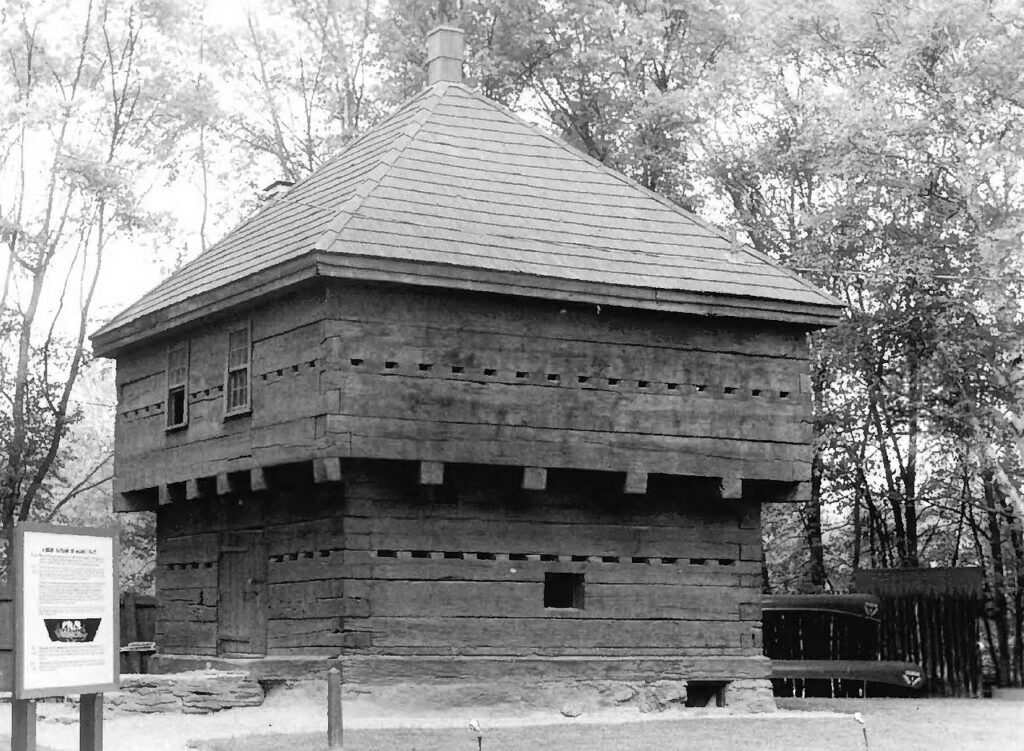
Located in Fort Kent, Maine, stands the historic Fort Kent, an important site dating back to the early 19th century, during the period of the Aroostook War. This fort, erected amidst the tension of a border dispute between the United States and British North America, is a powerful reminder of the region’s turbulent past.
Constructed by United States Army troops, Fort Kent was strategically positioned to deter British forces, showcasing the military might and determination of the young United States.
The fort was a significant player in the Aroostook War, an unresolved border conflict primarily fought through diplomatic negotiation rather than actual combat. Its presence underscored the gravity of the dispute and the commitment of the United States to safeguard its territorial claims.
In the present day, Fort Kent has been meticulously preserved and transformed into a museum and historic site, open to the public for exploration and learning. The fort provides an insightful journey into the past, giving visitors a chance to understand the political and military strategies of the time and life as a soldier during a period of high tension.
Inside the museum, visitors can explore various artifacts, documents, and exhibits that tell the story of the Aroostook War, the fort’s role, and its impact on the shaping of the region. It provides an invaluable educational experience, shedding light on a critical, albeit less-known, American history chapter.
The fort’s outdoor area is also accessible to the public, allowing visitors to walk the same grounds where soldiers once patrolled, providing a vivid sense of history and connection to the past. The views from the fort are breathtaking, offering a serene contrast to its historical military purpose.
Fort Baldwin
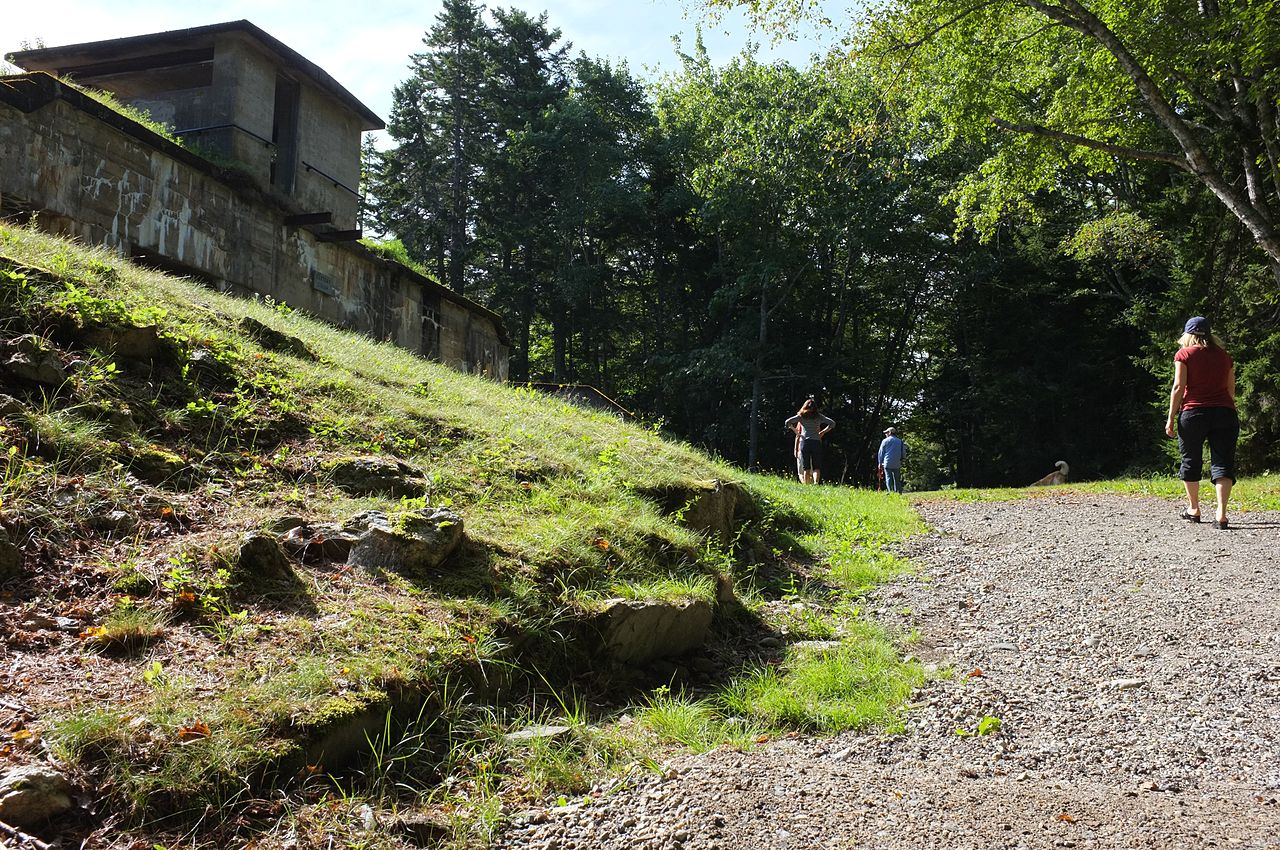
Located in Fort Kent, Maine, stands the historic Fort Kent, an important site dating back to the early 19th century, during the period of the Aroostook War. This fort, erected amidst the tension of a border dispute between the United States and British North America, is a powerful reminder of the region’s turbulent past.
Constructed by United States Army troops, Fort Kent was strategically positioned to deter British forces, showcasing the military might and determination of the young United States.
The fort was a significant player in the Aroostook War, an unresolved border conflict primarily fought through diplomatic negotiation rather than actual combat. Its presence underscored the gravity of the dispute and the commitment of the United States to safeguard its territorial claims.
In the present day, Fort Kent has been meticulously preserved and transformed into a museum and historic site, open to the public for exploration and learning.
Within the transformed fort, now a museum, guests can delve into a wealth of artifacts, historical records, and displays. These materials intricately weave the tale of the Aroostook War, illuminate the fort’s contribution, and highlight its influential role in molding the region’s identity.
This immersive journey offers a priceless educational encounter, enlightening visitors on a pivotal yet often overlooked facet of American history.
The fort’s outdoor area is also accessible to the public, allowing visitors to walk the same grounds where soldiers once patrolled, providing a vivid sense of history and connection to the past. The views from the fort are breathtaking, offering a serene contrast to its historical military purpose.
Related: Historic Forts in Maine: Fascinating Sites You Can Visit
History of Forts in Portland, Maine

Revolutionary War and Colonial History
In the colonial days, Portland was strategically important due to its position in Casco Bay and Portland Harbor. Sir Ferdinando Gorges, the first colonial proprietor of Maine, began developing the area’s defenses, starting with Fort Allen Park in the 17th century.
During the Revolutionary War, the British built Fort Preble on Hog Island Ledge to defend Maine’s coastline. However, it soon fell into American hands, and from this strategic position, they were able to secure the area from British attacks.
War of 1812
The War of 1812 brought the construction of several new forts, including Fort Scammel on House Island.
To further secure Portland Harbor, forts were built on Peaks Island, Great Diamond Island, and Cushing Island, which now serve as historical sites. In the years following the war, new technologies emerged, and granite ones replaced wooden structures.
Civil War
The Civil War era saw the construction of additional forts along the coast of Maine, such as Fort Sumter. However, the most prominent and well-preserved fort from this period is Fort Knox, located at the mouth of the Kennebec River.
The granite fort features parade grounds, officers’ quarters, and ironclad ships and is listed on the National Register of Historic Places.
World War I
As the United States entered World War I, the need for coastal defense increased, leading to the construction of military fortifications like Fort McKinley. The military fort also saw the development of new technologies, including submarine mines and advanced artillery.
World War II
World War II led to the construction of new forts, such as Battery Steele and Fort Popham, on the Maine coast. These forts housed long-range artillery that could reach enemy ships from miles away, and their granite walls remained a formidable obstacle for any potential attackers.
During this period, South Portland became a hub for constructing Liberty Ships to aid in the war effort. Fort Williams Park was also a hub for military activities, including deploying submarine mines and positioning anti-aircraft guns.
Today, the array of historic forts across the Maine coastline can be explored, with several offering educational programs and guided tours. For example, Friends of Fort Gorges is working to restore and preserve one such fort for the public to enjoy as a public park.
Preservation and Tourism

Portland, Maine, is home to several historic forts that played significant roles in colonial days and the defense of the United States during various wars.
Today, they serve as important sources of education and tourism, as well as protected sites that showcase the features and history of the area.
Museums and Educational Programs
Southern Maine Community College and Unity College work with various organizations to offer educational programs on the history and significance of these forts. Fort Preble, located in South Portland, is an open-air museum allowing visitors to explore the military history, admire granite walls, and take in views of Maine’s coast from the Penobscot River to the Bath area.
Fort Scammel on House Island and Fort Williams Park and the surrounding Portland headlight offers glimpses into the past, with visible remnants of coastal defense systems, such as submarine mines and World War II-era structures like Battery Steele.
Parks and Recreational Areas
Several forts have been transformed into popular parks and recreational areas. Fort Allen Park is one such site, nestled atop the Eastern Promenade, which treats visitors to picturesque views of Casco Bay and Portland Harbor.
On the other hand, Fort Williams Park is tucked away in Cape Elizabeth and houses the iconic Portland Head Light, a local landmark. This coastal park offers beach access, open space, and turn-of-the-century wooden structures perfect for picnics or a first-time exploration.
Battery Blair, located on Peaks Island, is part of a larger recreational area network, including the granite fort on Cushing Island and the parade ground of Fort McKinley on Great Diamond Island.
Friends of Fort Gorges
Fort Gorges, resting on Hog Island Ledge in the middle of Portland Harbor, is a testament to the long-standing human interest in preserving these sites. Friends of Fort Gorges is responsible for maintaining and restoring this 19th-century military fort for public enjoyment.
By working closely with the City of Portland and the Maine Coast Heritage Trust, Friends of Fort Gorges aims to protect this historic site for future generations. Their efforts include organizing educational programs, guided tours, and volunteer events to keep Fort Gorges in good condition and accessible to tourists.
The preservation and tourism of forts in the Portland, Maine, area continue to draw intrigue and instill a sense of local pride in the natural and man-made beauty the region has to offer.
Through historic sites, scenic recreational areas, and dedicated organizations such as Friends of Fort Gorges, the public can enjoy and explore these treasured sites that have played an iconic role in North America’s military and maritime history.
Related: Forts in Kittery Maine: Fascinating Historical Defenses
Architectural and Design Features
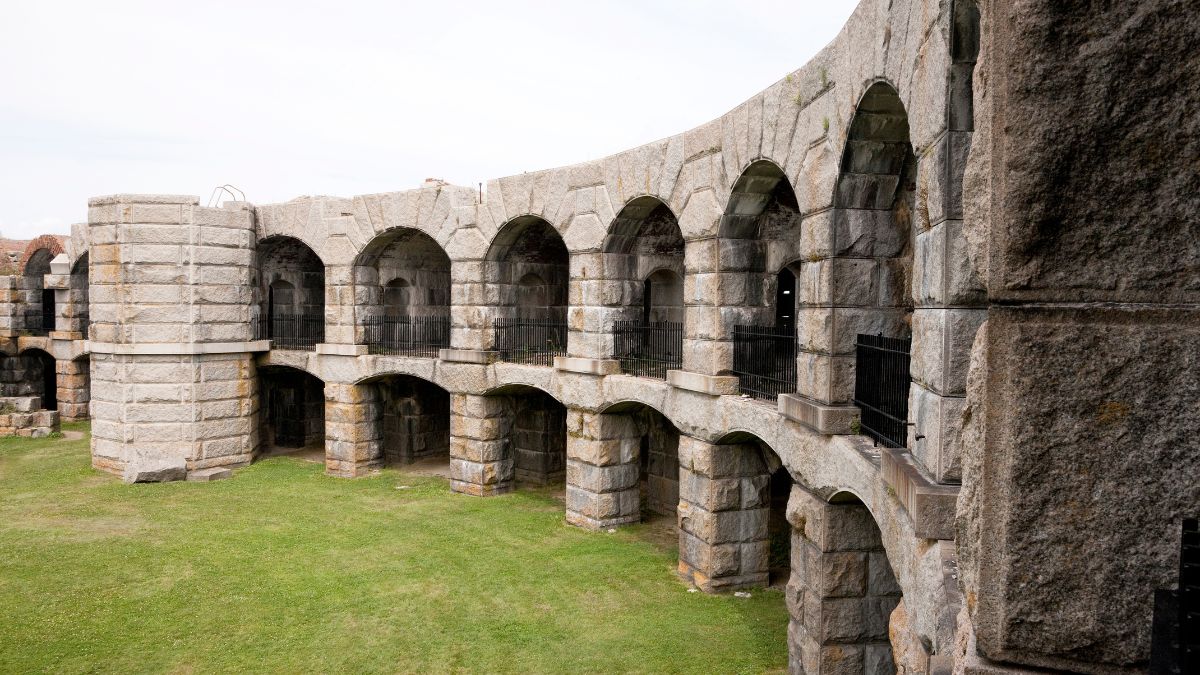
Granite and Blockhouses
The forts in Portland, Maine, are known for their impressive granite walls, which provided formidable protection against enemy attacks. Many forts around Casco Bay, such as Fort Scammel on House Island and Fort Preble in South Portland, were built using local granite blocks.
The blockhouse, a wooden structure often found within these forts, served as living quarters and defensive positions for soldiers.
Gun Emplacements and Rodman Guns
Key features of these historic forts include gun emplacements strategically placed to defend the mouth of Portland Harbor and the surrounding coastline. Forts like Fort Levett on Cushing Island and Fort McKinley on Great Diamond Island were equipped with various artillery throughout their history, ranging from smoothbore cannon to Rodman guns.
Rodman guns, large iron guns used during the Civil War era and World War I, could fire heavy projectiles to deter enemy ships and were a common sight in forts along the Maine coast.
Casey and Powder Magazines
Thomas Lincoln Casey, a prominent military engineer, played a pivotal role in the design of many forts in Maine. Under his supervision, efficient and secure powder magazines were built to store explosives safely.
These magazines, often located deep within the granite-walled fortress, protected the fort’s firepower in case of a direct hit during an attack. Fort Williams Park in Cape Elizabeth and Fort Knox along the Kennebec River are examples of forts that featured Casey’s architectural design.
Casemates
Casemates, fortified chambers often built within the walls or under a protective earthen embankment, were another staple of forts in Portland, Maine. These structures provided shelter for soldiers and offered additional protection for weapons and supplies.
Forts such as Fort Scammel, Fort Popham, and Fort McClary incorporated casemates into their design, ensuring the fort’s personnel and materiel were well protected amidst the challenging landscape and harsh weather of the North Atlantic coast.
Portland Harbor and Ship History

Portland Harbor, located within Casco Bay, boasts a rich maritime history, with many historic forts dotted along its shorelines. Since colonial days, the area has been recognized as a strategic and crucial location for shipbuilding and military defense.
Establishing shipyards along the harbor played a significant role in naval history, particularly during the Spanish-American War, World War I, and World War II. The construction of numerous forts in colonial days and onwards provided solid coastal defense for Maine.
Two notable historical sites are on the small islands in Portland Harbor. Fort Preble, situated on Hog Island Ledge in South Portland, and Fort Scammel on House Island played crucial roles in different wars.
Fort Preble guarded the harbor entrance during the turn of the century, while Fort Scammel served as a vital military fort during the War of 1812.
The shores of Casco Bay lines are embellished with granite forts, some listed on the National Register of Historic Places. For instance, Fort Gorges, built on Peaks Island, is managed by the nonprofit Friends of Fort Gorges and serves as a public park.
Aside from the forts, shipbuilding played a substantial role in Portland’s history. South Portland’s shipyards were crucial in producing Liberty ships during World War II. Submarine mines were deployed in the harbor to protect the city of Portland and its shipyards from enemy ships, complementing the coastal defense provided by the historic forts.
As a testament to the importance of Portland Harbor in naval history, numerous local landmarks such as Portland Head Light, Fort Sumter, and Fort Knox are preserved by government and nonprofit organizations for educational purposes and public enjoyment.
Frequently Asked Questions
What is Fort Gorges?
Fort Gorges is a historic military fort in Casco Bay, Portland Harbor, Maine. It was built between 1858 and 1864 to protect Portland Harbor from enemy ships during the American Civil War.
The fort is named after Sir Ferdinando Gorges, the colonial proprietor of Maine. Constructed primarily of granite blocks, the fort features a unique horseshoe shape and is situated on Hog Island Ledge.
How to visit Fort Williams?
Fort Williams Park, located in South Portland, is open to the public, and admission is free. To visit the park, you can drive or take a bus to South Portland and follow the signs to the park entrance.
The park offers various recreational activities, including walking trails, picnic areas, and beautiful views of the Maine coast, Portland Head Light, and Casco Bay. You can also learn about the history of Fort Williams while exploring its remnants, such as Battery Blair and other coastal defense facilities.
What is Fort McClary known for?
Fort McClary, located at the mouth of the Piscataqua River near Kittery, is a historic site dating back to the early 19th century. The fort played a crucial role in colonial days and throughout various wars, including the Revolutionary War, the Civil War, and World War I.
The fort is known for its unique five-sided granite blockhouse, which offers a glimpse into the nation’s coastal defense history. Fort McClary is a State Historic Site, and visitors can explore the grounds, battery, and blockhouse while learning about its history.
How to get to Fort Scammel?
Fort Scammel is situated on House Island in Portland Harbor. You must take a private boat to reach the island, as there are no public transportation options. Those with their boats can dock at the island, while visitors without boats can arrange a tour of Casco Bay, which may include a stop at Fort Scammel. Some tours also offer the opportunity to disembark on House Island and explore Fort Scammel on foot.
What is Portland Head Light?
Portland Head Light is a historic lighthouse in Fort Williams Park, South Portland. It has been guiding mariners since its construction in 1791 through the perilous waters of Cape Elizabeth.
The lighthouse is a stunning example of architectural design surrounded by beautiful natural features. The Portland Head Light is listed on the National Register of Historic Places, and visitors can learn about its history at the on-site museum.
Are there guided tours for forts?
Several organizations and tour companies offer guided tours of Portland’s historic forts, including Fort Gorges, Fort McClary, and Fort Scammel.
Often, these tours provide fascinating historical context and expert knowledge of the forts’ military significance in defending Casco Bay and Portland Harbor. Some tour guides may offer special events and educational programs throughout the year. Check with individual tour providers for availability, pricing, and any additional information regarding their offerings.

Cory is a website owner and content creator who enjoys fishing, history, coin collecting, and sports, among other hobbies. He is a husband and father of four.
Romans 15:4 For whatever was written in former days was written for our instruction, that through endurance and through the encouragement of the Scriptures we might have hope.


do you have any pictures or info for Fort Shelby, Nortland Maine I have a picture of a militay person stated he served here Any info would be greatly appreciated
Hi Marlene,
Sorry but I have no information on a Fort Shelby in Maine but I will keep digging.